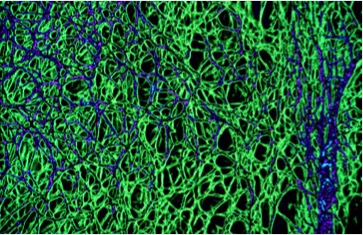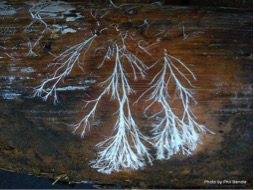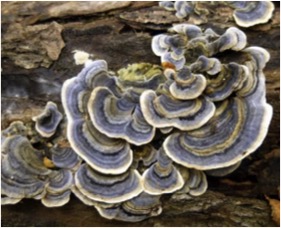- What is mycelium?
Mycelium are cobweb-like structures of a ubiquitous underground animal, known collectively as fungi. This cobweb-like matrix is one stage in fungi’s life cycle. To reproduce, the mycelium send up a fruiting body or the mushroom. The mushroom grows, and the mushroom sporulates when the environment is ready to accept the spores. Once released, the spores travel through the air and lands on the surface of a suitable location, which new mycelium come about.

Mycelium are wide-spread throughout our planet. The largest species on Earth, is a mycelium mass greater than 2000 acres in the Pacific Northwest. Interestingly, the protective covering is only one-cell wall thick! When compared to Homo sapiens domesticofragilis’ epidermis or outer skin, one sees a dramatic difference in cellular depth. And within one single cubic inch of topsoil, their contains enough fungal cells to stretch more than 8 miles if placed end to end!

- Where can someone find mycelium?
Mycelium are found everywhere- in space, streams, and throughout most terrestrial bodies. Mycelium are so strong that the fruiting body can break through cement! Next time you are walk in your local forest, look for their presence under leaves, or wrapping around decaying trees.
- Why is mycelium important?
Mycelium are the decomposers of our biosphere. They excrete a host of novel enzymes with the ability to break down even the most toxic chemicals that Homo sapiens domesticofragilis has created.
Mycelium are the stewards of our ecosystems. Mycelium ally will plants, insects, and mammals. Plants for example, provide mycelium with fungal sugars through their ability to photosynthesize. In return mycelium provide structure, antibiotics, and nitrogen.

- What is the value to our race?
Because animals share more genetic material and ancestral lineage with fungi, than we do with plants, one can be sure that this evolutionary connection has interesting properties.
For one, fungi deal with similar bacterial onslaughts that we do as well. Many species of mushrooms are showing great efficacy in dealing with debilitating cancers, infections, and auto-immune diseases. Shiitake mushroom mycelium for example demonstrate bacteriostatic activity against Streptococcus pyogenes, Staphylococcus aureus and Bacillus megaterium (Hatvani, 2001).
- How can we utilize the mycelium in one’s life?
I think science is just scratching the surface with their understanding of fungi’s importance and role in our ecosystems.
I have begun learning of abilities such as cleaning oil spills, protecting DNA, and providing awe as we walk through our landscape. Reconnecting and rekindling this relationship has become a top priority of mine, and my fellow kindred.
{{cta(‘019051f0-80f6-4bef-875b-2e3de6ac6fc3′,’justifycenter’)}}

